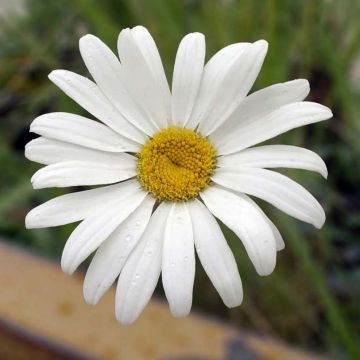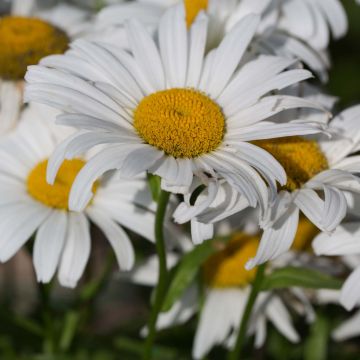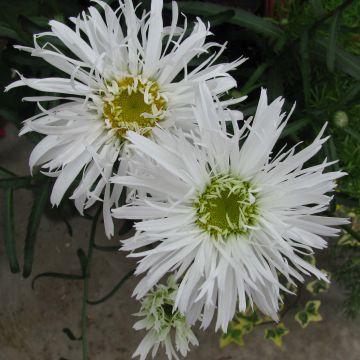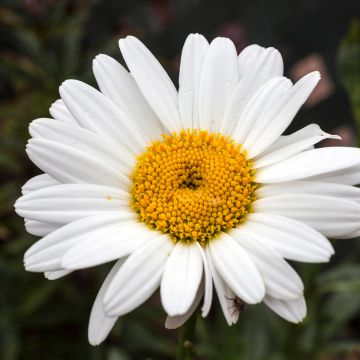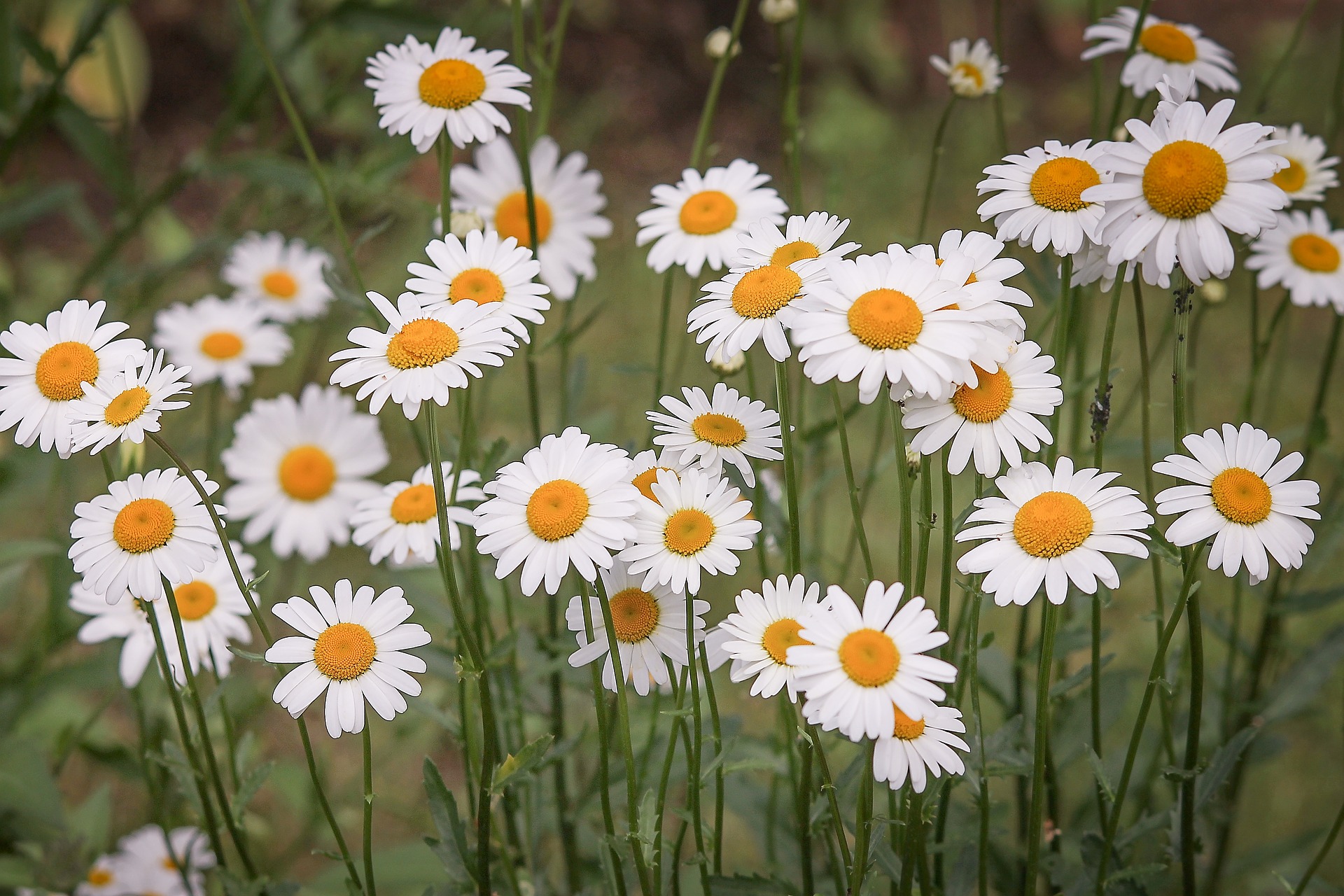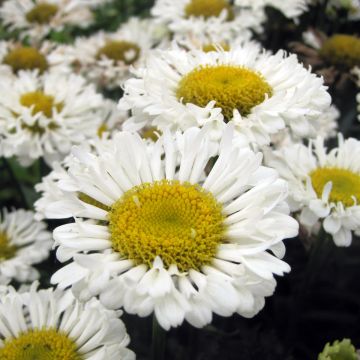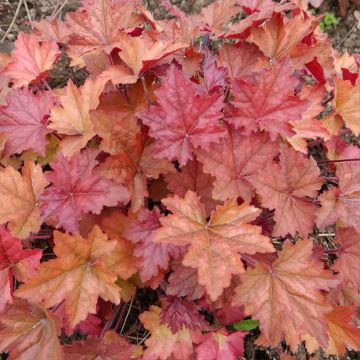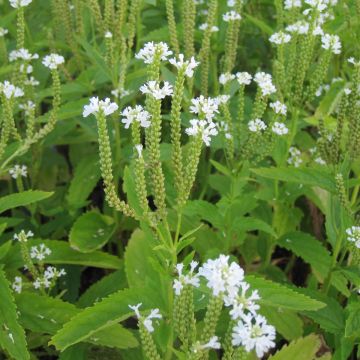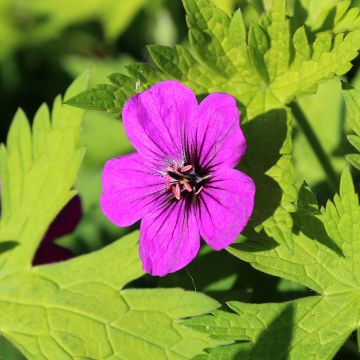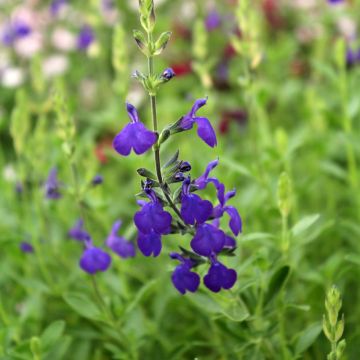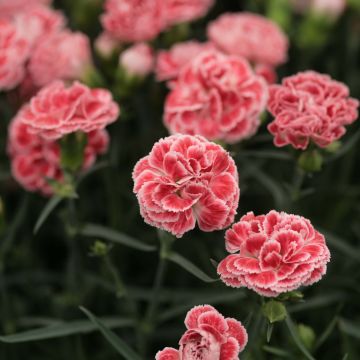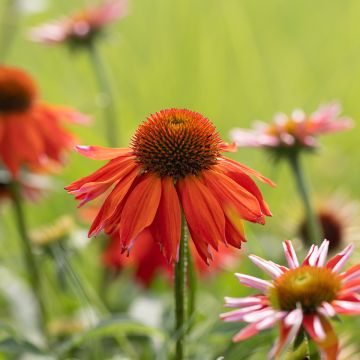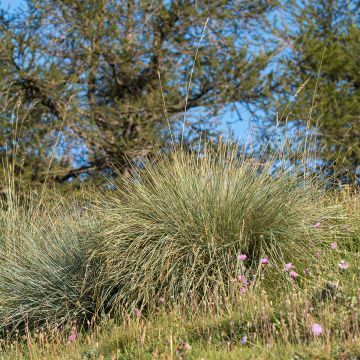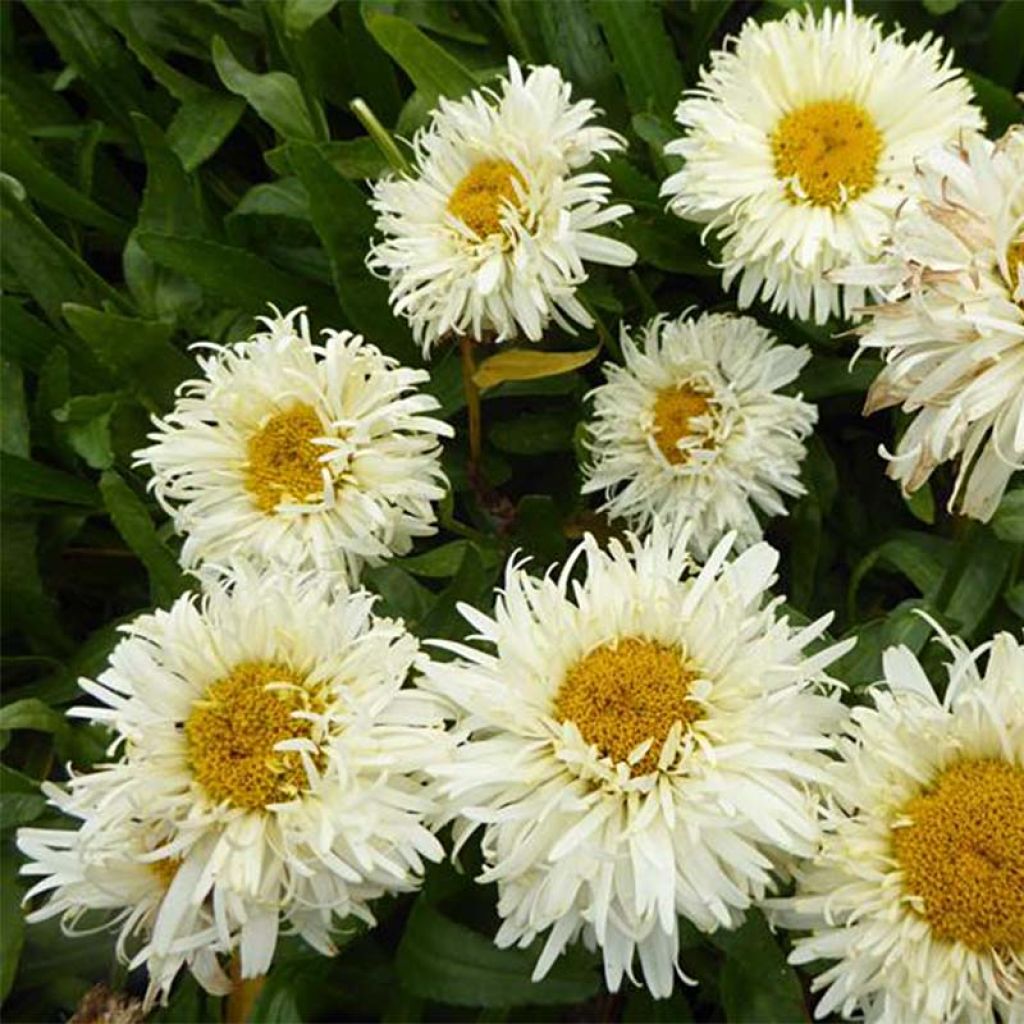

Leucanthemum superbum Kings Crown - Shasta Daisy
Leucanthemum superbum Kings Crown - Shasta Daisy
Leucanthemum x superbum Kings Crown
Shasta Daisy
Plant arrived wilted, we'll see what it becomes in spring.
Alsane, 26/10/2024
Special offer!
Receive a €20 voucher for any order over €90 (excluding delivery costs, credit notes, and plastic-free options)!
1- Add your favorite plants to your cart.
2- Once you have reached €90, confirm your order (you can even choose the delivery date!).
3- As soon as your order is shipped, you will receive an email containing your voucher code, valid for 3 months (90 days).
Your voucher is unique and can only be used once, for any order with a minimum value of €20, excluding delivery costs.
Can be combined with other current offers, non-divisible and non-refundable.
Why not try an alternative variety in stock?
View all →This plant carries a 12 months recovery warranty
More information
We guarantee the quality of our plants for a full growing cycle, and will replace at our expense any plant that fails to recover under normal climatic and planting conditions.
Would this plant suit my garden?
Set up your Plantfit profile →
Description
Leucanthemum superbum 'Kings Crown' is a variety of large daisy with a very compact habit, whose large double and tousled flowers quickly change from pale yellow to white and yellow, creating a very pretty display. This perennial blooms all summer in moist soil. Very easy to grow in the ground but also in pots, this plant will easily bring a touch of madness to your borders, patios and bouquets.
Leucanthemum are herbaceous perennial plants that belong to the Asteraceae family. Leucanthemum x superbum is a robust hybrid dating back to 1890 resulting from the cross-breeding of different daisy species such as Leucanthemum vulgare, Leucanthemum maximum and Leucanthemum lacustre.
'Kings Crown' is a very recent selection. The plant forms a clump about 25 cm (10in) in height for the foliage, 30 cm (12in) in flowers, which spreads in width with a moderately fast growth rate. The floral stems of this variety are short and sturdy and do not require staking. The lush foliage persists more or less in winter. Flowering takes place from June to August in average climates, earlier in the south. It takes the form of large solitary heads of 5 to 7 cm (2 to 3in) in diameter, whose crown is composed of finely cut and fringed ligules, like a tousled pompom. This crown is tinted pale yellow at first, then becomes bicolour, white on the periphery, more yellow around the centre, which is also yellow. The foliage, arranged on the lower two-thirds of the stems, consists of large ovate-lanceolate leaves with toothed edges, dark green in colour. The plant reaches full maturity in five years.
In daisies, one does not find extravagant colors, but it is the detail and the structure of the flowers which truly brings uniqueness to the garden. Leucanthemum 'Kings Crown', so suitable for making bouquets, will be perfect in a border or in a meadow in a slightly wild corner. Accompany its flowering with that of cosmos, combine them with peonies, blue lupins, bellflowers, salvias or perennial geraniums, or gaillardias for example. Something very new that will nevertheless remind us of our grandmothers' gardens, overflowing with indestructible perennials.
Leucanthemum superbum Kings Crown - Shasta Daisy in pictures
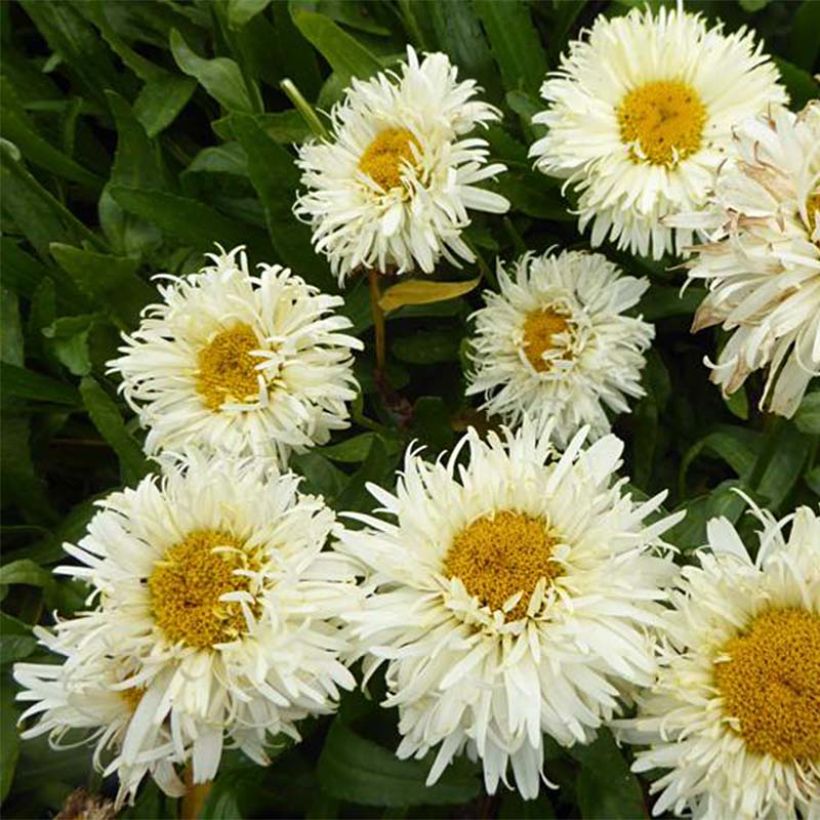

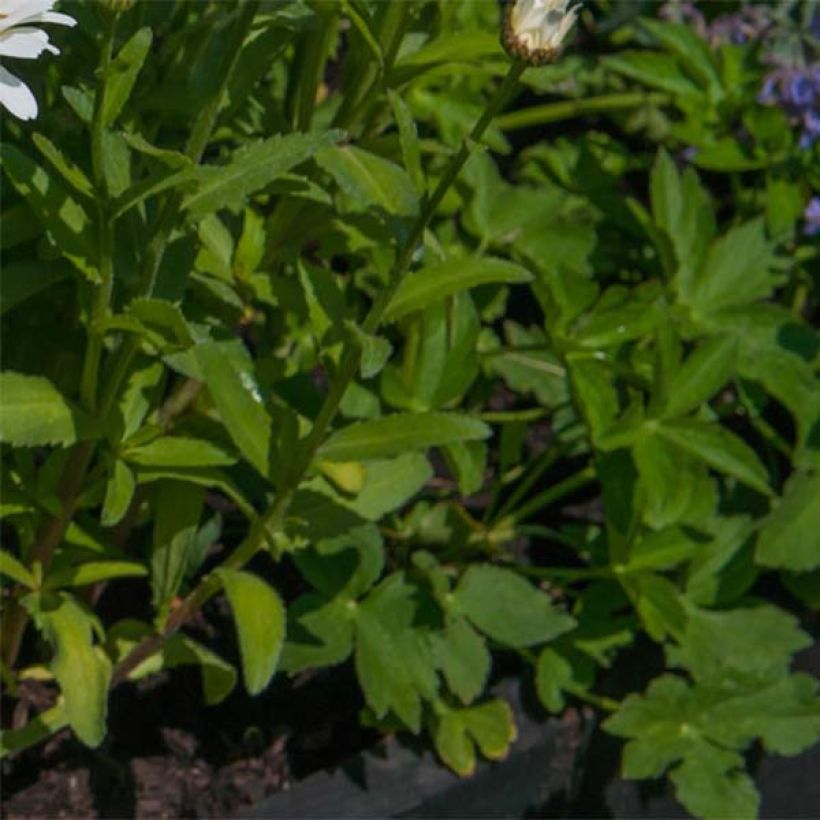

Flowering
Foliage
Plant habit
Botanical data
Leucanthemum
x superbum
Kings Crown
Asteraceae
Shasta Daisy
Cultivar or hybrid
Other Leucanthemum - Marguerite
View all →Planting and care
Plant Leucanthemum x superbum 'Kings Crown' in deep, loose, moist soil, or even occasionally dry soil which is not too rich, but well-drained. This plant tolerates limestone perfectly. It thrives in a sunny, or at most partially shaded, position. It can withstand temperatures down to -20°C (-4°F). Regularly remove faded flowers and remove dead foliage in spring. This daisy may be attacked by aphids, snails, and may have foliar spots.
Planting period
Intended location
Care
Planting & care advice
-
, onOrder confirmed
Reply from on Promesse de fleurs
Similar products
Haven't found what you were looking for?
Hardiness is the lowest winter temperature a plant can endure without suffering serious damage or even dying. However, hardiness is affected by location (a sheltered area, such as a patio), protection (winter cover) and soil type (hardiness is improved by well-drained soil).

Photo Sharing Terms & Conditions
In order to encourage gardeners to interact and share their experiences, Promesse de fleurs offers various media enabling content to be uploaded onto its Site - in particular via the ‘Photo sharing’ module.
The User agrees to refrain from:
- Posting any content that is illegal, prejudicial, insulting, racist, inciteful to hatred, revisionist, contrary to public decency, that infringes on privacy or on the privacy rights of third parties, in particular the publicity rights of persons and goods, intellectual property rights, or the right to privacy.
- Submitting content on behalf of a third party;
- Impersonate the identity of a third party and/or publish any personal information about a third party;
In general, the User undertakes to refrain from any unethical behaviour.
All Content (in particular text, comments, files, images, photos, videos, creative works, etc.), which may be subject to property or intellectual property rights, image or other private rights, shall remain the property of the User, subject to the limited rights granted by the terms of the licence granted by Promesse de fleurs as stated below. Users are at liberty to publish or not to publish such Content on the Site, notably via the ‘Photo Sharing’ facility, and accept that this Content shall be made public and freely accessible, notably on the Internet.
Users further acknowledge, undertake to have ,and guarantee that they hold all necessary rights and permissions to publish such material on the Site, in particular with regard to the legislation in force pertaining to any privacy, property, intellectual property, image, or contractual rights, or rights of any other nature. By publishing such Content on the Site, Users acknowledge accepting full liability as publishers of the Content within the meaning of the law, and grant Promesse de fleurs, free of charge, an inclusive, worldwide licence for the said Content for the entire duration of its publication, including all reproduction, representation, up/downloading, displaying, performing, transmission, and storage rights.
Users also grant permission for their name to be linked to the Content and accept that this link may not always be made available.
By engaging in posting material, Users consent to their Content becoming automatically accessible on the Internet, in particular on other sites and/or blogs and/or web pages of the Promesse de fleurs site, including in particular social pages and the Promesse de fleurs catalogue.
Users may secure the removal of entrusted content free of charge by issuing a simple request via our contact form.
The flowering period indicated on our website applies to countries and regions located in USDA zone 8 (France, the United Kingdom, Ireland, the Netherlands, etc.)
It will vary according to where you live:
- In zones 9 to 10 (Italy, Spain, Greece, etc.), flowering will occur about 2 to 4 weeks earlier.
- In zones 6 to 7 (Germany, Poland, Slovenia, and lower mountainous regions), flowering will be delayed by 2 to 3 weeks.
- In zone 5 (Central Europe, Scandinavia), blooming will be delayed by 3 to 5 weeks.
In temperate climates, pruning of spring-flowering shrubs (forsythia, spireas, etc.) should be done just after flowering.
Pruning of summer-flowering shrubs (Indian Lilac, Perovskia, etc.) can be done in winter or spring.
In cold regions as well as with frost-sensitive plants, avoid pruning too early when severe frosts may still occur.
The planting period indicated on our website applies to countries and regions located in USDA zone 8 (France, United Kingdom, Ireland, Netherlands).
It will vary according to where you live:
- In Mediterranean zones (Marseille, Madrid, Milan, etc.), autumn and winter are the best planting periods.
- In continental zones (Strasbourg, Munich, Vienna, etc.), delay planting by 2 to 3 weeks in spring and bring it forward by 2 to 4 weeks in autumn.
- In mountainous regions (the Alps, Pyrenees, Carpathians, etc.), it is best to plant in late spring (May-June) or late summer (August-September).
The harvesting period indicated on our website applies to countries and regions in USDA zone 8 (France, England, Ireland, the Netherlands).
In colder areas (Scandinavia, Poland, Austria...) fruit and vegetable harvests are likely to be delayed by 3-4 weeks.
In warmer areas (Italy, Spain, Greece, etc.), harvesting will probably take place earlier, depending on weather conditions.
The sowing periods indicated on our website apply to countries and regions within USDA Zone 8 (France, UK, Ireland, Netherlands).
In colder areas (Scandinavia, Poland, Austria...), delay any outdoor sowing by 3-4 weeks, or sow under glass.
In warmer climes (Italy, Spain, Greece, etc.), bring outdoor sowing forward by a few weeks.
































